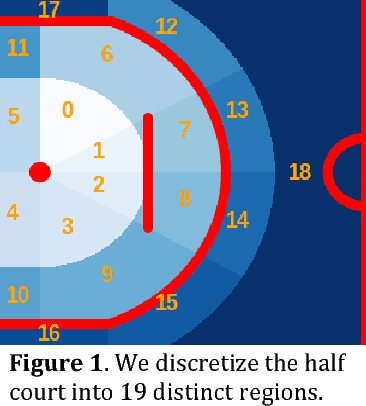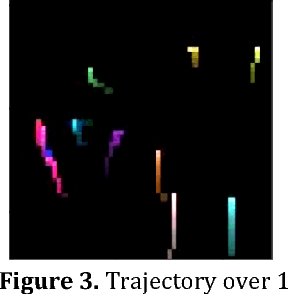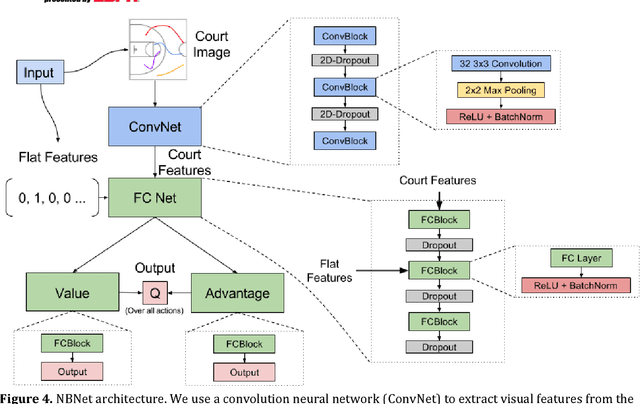Jonathan Skaza
The Advantage of Doubling: A Deep Reinforcement Learning Approach to Studying the Double Team in the NBA
Mar 08, 2018



Abstract:During the 2017 NBA playoffs, Celtics coach Brad Stevens was faced with a difficult decision when defending against the Cavaliers: "Do you double and risk giving up easy shots, or stay at home and do the best you can?" It's a tough call, but finding a good defensive strategy that effectively incorporates doubling can make all the difference in the NBA. In this paper, we analyze double teaming in the NBA, quantifying the trade-off between risk and reward. Using player trajectory data pertaining to over 643,000 possessions, we identified when the ball handler was double teamed. Given these data and the corresponding outcome (i.e., was the defense successful), we used deep reinforcement learning to estimate the quality of the defensive actions. We present qualitative and quantitative results summarizing our learned defensive strategy for defending. We show that our policy value estimates are predictive of points per possession and win percentage. Overall, the proposed framework represents a step toward a more comprehensive understanding of defensive strategies in the NBA.
 Add to Chrome
Add to Chrome Add to Firefox
Add to Firefox Add to Edge
Add to Edge